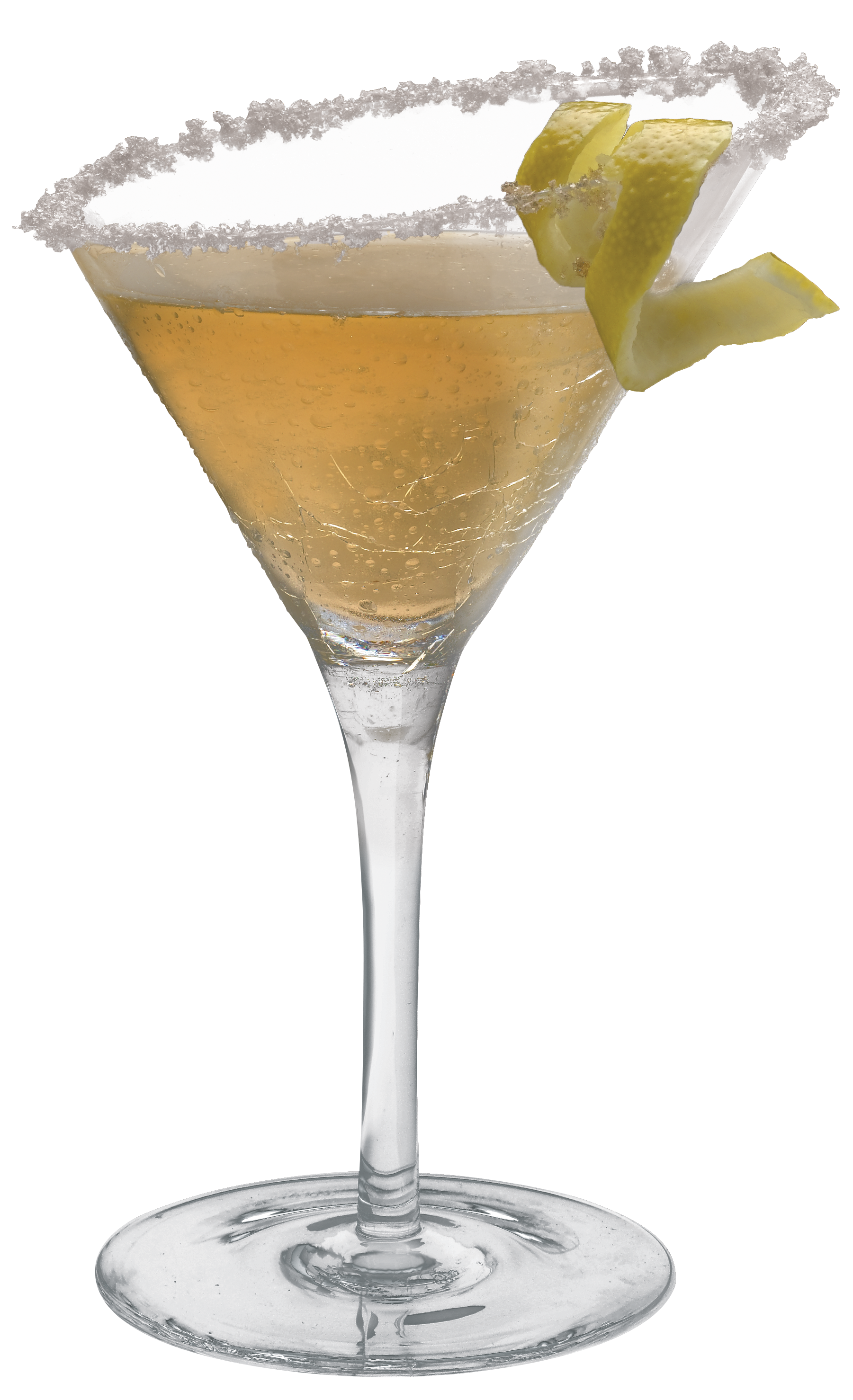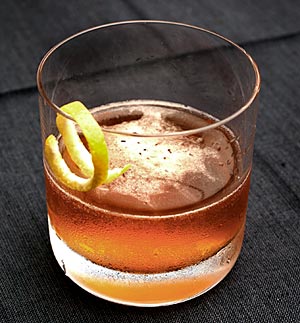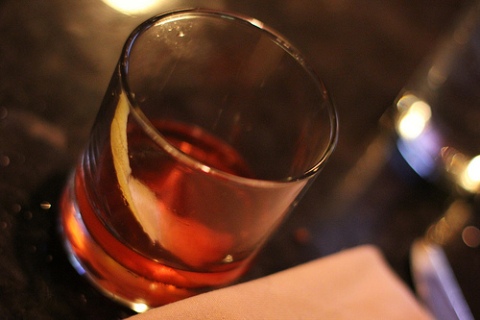Drink of the Week: The Great Migration

Today we present the second part of what’s going to be trilogy of posts featuring the beguiling and bewitching new Mariposa Agave Nectar Liqueur. Last week, I discussed the seductive sweetness of the concoction in context with the Mariposa Mojito.
Now, we move on to a sweeter territory with a drink that’s been heavily promoted by Mariposa’s masters over at Heaven Hill Distilleries, Inc. It’s something like a gin sidecar, but slightly more sugary — that’s not always a bad thing — and using a liqueur that I personally dig more than most. I have to admit the historical connections of the drink’s name have me at something of a loss, however, though it’s clear there was more than one great migration. Some of you might also want to have more than one of the libation of the same name.
The Great Migration
1 1/2 ounces dry gin
3/4 ounce Mariposa Agave Nectar Liqueur
3/4 ounce fresh squeezed lemon juice
1/4 ounce simple syrup
Turbinado/raw sugar
Lemon twist (garnish)
Rim a cocktail glass with raw sugar — It’s very possible that the plain old white stuff might work almost as well — by wetting the edges and dipping it into a plate full of the sweet stuff. Take your rimmed glass and stick it in the freezer to get it nice and chilled while you make the rest of the drink.
Combine all the liquid ingredients in a cocktail shaker with plenty of ice. If you don’t have simple syrup on hand, you can probably dissolve some superfine sugar in a little bit of room temperature water and use that instead. Shake vigorously and strain into your now well chilled rimmed cocktail glass.
Engage in the magical process old school/artisanal bartenders call “expressing” the lemon twist which is crucial to drinks like the Sazerac. It involves twisting a very thin — as in rind-free — strip of the lemon’s skin; the act of twisting is thought to spritz a tiny but notable amount of lemon oil into the drink. Drop the skin into the drink and sip away at the sweetness.
****
If you like your drink very sweet indeed, you can make the accidental alteration I did while preparing this drink for some cooperative test subjects. Having forgotten the complete recipe, I actually doubled the amount of simple syrup to an entire half ounce — but I forgot about the turbinado rim. That made for a somewhat less complicated beverage that, for me, wasn’t as good as the recipe proper. However, it went really down really well with my willing guinea pigs and might work better for a lot of people who are less frequent boozers.
You can follow us on Twitter and Facebook for content updates. Also, sign up for our email list for weekly updates and check us out on Google+ as well.
Posted in: Food & Drink, Lifestyle, Vices
Tags: cocktails, Drink of the Week, gin, Happy Hour, Mariposa Agave Liqueur, Mariposa Mojito, sazerac, Sidecar, The Great Migration

 There was a time when calling a drink a cognac sazerac would have been close to calling a certain sandwich a “beef hamburger.” However, New Orleans’s magnificent contribution to
There was a time when calling a drink a cognac sazerac would have been close to calling a certain sandwich a “beef hamburger.” However, New Orleans’s magnificent contribution to  It might seem a bit odd, but it was current MSNBC political goddess and past Air America star Rachel Maddow whose radio “cocktail moments” largely propelled your loyal scribe’s fledgling interest in
It might seem a bit odd, but it was current MSNBC political goddess and past Air America star Rachel Maddow whose radio “cocktail moments” largely propelled your loyal scribe’s fledgling interest in  As the name implies, this drink is perhaps the very oldest
As the name implies, this drink is perhaps the very oldest 








